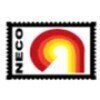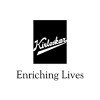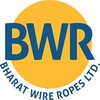Filter interviews by
SMC Power Generation Interview Questions and Answers
12 Interview questions
Blast furnace issues include operational inefficiencies, material quality, and environmental concerns impacting production.
Operational inefficiencies: Delays in charging materials can lead to reduced output.
Material quality: Impurities in iron ore can affect the quality of the final product.
Temperature control: Inconsistent temperatures can lead to incomplete reactions.
Environmental concerns: Emissions from the fu...
To increase the campaign life of a dri kiln, proper maintenance, monitoring of operating conditions, and regular inspections are essential.
Implement a regular maintenance schedule to ensure all components are functioning properly.
Monitor operating conditions such as temperature, pressure, and feed rate to optimize performance.
Conduct regular inspections to identify and address any potential issues before they esca...
Fuel moisture can be categorized into three main types: free moisture, bound moisture, and surface moisture.
Free Moisture: Water that is not chemically bound and can be easily removed, e.g., rainwater on coal.
Bound Moisture: Water that is chemically bonded within the fuel structure, e.g., water in biomass.
Surface Moisture: Water that adheres to the surface of fuel particles, e.g., moisture on wood chips.
Power factor is the ratio of real power to apparent power in an AC circuit.
It is a measure of how efficiently electrical power is being used.
A power factor of 1 means all the power is being used effectively.
A power factor less than 1 means some power is being wasted.
Capacitors and inductors can be used to improve power factor.
Power factor is important for energy efficiency and cost savings.
Hot kiln root clearance should be decreased to prevent damage to the kiln.
Hot kiln root clearance refers to the distance between the kiln shell and the supporting rollers.
If the clearance is too large, it can cause the kiln to sag and damage the rollers.
Decreasing the clearance can prevent this damage and improve kiln performance.
Regular maintenance and monitoring of the clearance is important to ensure safe and e...
Warm gear is used for cold weather while pelentery gear box is a type of gearbox used in heavy machinery.
Warm gear is designed to keep the wearer warm in cold weather conditions.
Pelentery gear box is a type of gearbox used in heavy machinery such as tractors and excavators.
Warm gear is typically made of materials such as fleece, wool, or down feathers.
Pelentery gear box is designed to handle heavy loads and provid...
The maximum angle of a belt conveyor depends on various factors such as the type of belt, material being transported, and the environment.
The maximum angle of a belt conveyor is typically between 15 to 30 degrees.
The angle can be increased with the use of cleats or sidewalls on the belt.
The material being transported also plays a role in determining the maximum angle.
The environment, such as temperature and humidi...
Root clearance is the distance between the gear teeth and the mating gear's root circle.
It is an important parameter in gear design and manufacturing.
It ensures proper functioning of gears and prevents interference.
It is measured by placing a thickness gauge between the gear teeth and the mating gear's root circle.
The clearance value depends on the gear type, size, and application.
For example, the root clearance f...
Main drive gearboxes can use helical or worm gears, each offering unique advantages in torque and efficiency.
Helical gears provide smoother operation and higher efficiency due to their angled teeth.
Worm gears offer high torque multiplication and compact design, ideal for low-speed applications.
Example of helical gear use: automotive transmissions for better performance.
Example of worm gear use: conveyor systems wh...
DRI sponge iron is a type of iron produced from direct reduction of iron ore using natural gas or coal as a reducing agent.
DRI stands for Direct Reduced Iron
Produced by reducing iron ore in the form of lumps, pellets, or fines
Commonly used in steelmaking processes as a substitute for scrap iron
SMC Power Generation Interview Experiences
12 interviews found
I appeared for an interview before Sep 2022.
(1 Question)
- Q1. Family Information and acedmic
(2 Questions)
- Q1. Different between GCV and NCV
- Q2. What is the UF
I applied via Walk-in and was interviewed in May 2024. There was 1 interview round.
(2 Questions)
- Q1. What is dri sponge iron
- Ans.
DRI sponge iron is a type of iron produced from direct reduction of iron ore using natural gas or coal as a reducing agent.
DRI stands for Direct Reduced Iron
Produced by reducing iron ore in the form of lumps, pellets, or fines
Commonly used in steelmaking processes as a substitute for scrap iron
- Q2. How can increase campaign life of dri kiln
- Ans.
To increase the campaign life of a dri kiln, proper maintenance, monitoring of operating conditions, and regular inspections are essential.
Implement a regular maintenance schedule to ensure all components are functioning properly.
Monitor operating conditions such as temperature, pressure, and feed rate to optimize performance.
Conduct regular inspections to identify and address any potential issues before they escalate.
...
I applied via Recruitment Consulltant and was interviewed in Aug 2023. There were 2 interview rounds.

(4 Questions)
- Q1. How many types of moisture in fuel
- Ans.
Fuel moisture can be categorized into three main types: free moisture, bound moisture, and surface moisture.
Free Moisture: Water that is not chemically bound and can be easily removed, e.g., rainwater on coal.
Bound Moisture: Water that is chemically bonded within the fuel structure, e.g., water in biomass.
Surface Moisture: Water that adheres to the surface of fuel particles, e.g., moisture on wood chips.
- Q2. Different but ween dolachar and coal
- Q3. How many years of experience in this field and how many types problem face you
- Q4. Why are you charging your work
I applied via Approached by Company and was interviewed in Feb 2024. There was 1 interview round.
(2 Questions)
- Q1. Boiler operator realeted
- Q2. Pressure and temperature of the Boiler
- Ans.
The pressure and temperature of the boiler are crucial factors in maintaining its efficiency and safety.
Pressure should be monitored regularly to ensure it stays within safe limits.
Temperature control is important to prevent overheating and potential damage to the boiler.
Proper maintenance and regular checks are necessary to ensure the boiler operates at optimal pressure and temperature levels.
I applied via Approached by Company and was interviewed in Nov 2022. There were 3 interview rounds.

(5 Questions)
- Q1. Heat transfer and heat treatment.
- Q2. Gear and gearbox, bearing, nozzles
- Q3. Metal forming process like casting, rolling.
- Q4. About you previous work and responsibilities.
- Q5. If possible then try to gain knowledge about steel and its composition.
(1 Question)
- Q1. About previous work and salaries discussion.
I applied via Referral and was interviewed before May 2022. There were 3 interview rounds.

(2 Questions)
- Q1. What is power factor?
- Ans.
Power factor is the ratio of real power to apparent power in an AC circuit.
It is a measure of how efficiently electrical power is being used.
A power factor of 1 means all the power is being used effectively.
A power factor less than 1 means some power is being wasted.
Capacitors and inductors can be used to improve power factor.
Power factor is important for energy efficiency and cost savings.
- Q2. Gave answer in confident
(2 Questions)
- Q1. Why u want to join this company?
- Q2. Because i am fresher

(1 Question)
- Q1. ABOUT URS PERSONAL DATA AND PROFFEISIONAL DATA
(1 Question)
- Q1. About urs shift and problems in urs shift.
(1 Question)
- Q1. Salary negotiation,transportation
Interview Preparation Tips
Interview Questionnaire
5 Questions
- Q1. What is the root clearance
- Ans.
Root clearance is the distance between the gear teeth and the mating gear's root circle.
It is an important parameter in gear design and manufacturing.
It ensures proper functioning of gears and prevents interference.
It is measured by placing a thickness gauge between the gear teeth and the mating gear's root circle.
The clearance value depends on the gear type, size, and application.
For example, the root clearance for sp...
- Q2. Main drive gear box is helical gear or warm gear
- Ans.
Main drive gearboxes can use helical or worm gears, each offering unique advantages in torque and efficiency.
Helical gears provide smoother operation and higher efficiency due to their angled teeth.
Worm gears offer high torque multiplication and compact design, ideal for low-speed applications.
Example of helical gear use: automotive transmissions for better performance.
Example of worm gear use: conveyor systems where s...
- Q3. Hot kiln root clearance increasing or decreas
- Ans.
Hot kiln root clearance should be decreased to prevent damage to the kiln.
Hot kiln root clearance refers to the distance between the kiln shell and the supporting rollers.
If the clearance is too large, it can cause the kiln to sag and damage the rollers.
Decreasing the clearance can prevent this damage and improve kiln performance.
Regular maintenance and monitoring of the clearance is important to ensure safe and effici...
- Q4. What is maximum angle of belt conveyor
- Ans.
The maximum angle of a belt conveyor depends on various factors such as the type of belt, material being transported, and the environment.
The maximum angle of a belt conveyor is typically between 15 to 30 degrees.
The angle can be increased with the use of cleats or sidewalls on the belt.
The material being transported also plays a role in determining the maximum angle.
The environment, such as temperature and humidity, c...
- Q5. What is difference between warm gear & pelentery gear box
- Ans.
Warm gear is used for cold weather while pelentery gear box is a type of gearbox used in heavy machinery.
Warm gear is designed to keep the wearer warm in cold weather conditions.
Pelentery gear box is a type of gearbox used in heavy machinery such as tractors and excavators.
Warm gear is typically made of materials such as fleece, wool, or down feathers.
Pelentery gear box is designed to handle heavy loads and provide hig...
Interview Preparation Tips
I applied via Referral and was interviewed in Oct 2021. There was 1 interview round.
Interview Questionnaire
5 Questions
- Q1. Give your self introduction
- Q2. Tell me your Job profile at M/s Nalco
- Q3. Tell me your Gm's Name which u hv worked under them?
- Q4. Tell us about family?
- Q5. How much salary u expect frm us?
Interview Preparation Tips
- Q1. Productive in MBF
- Q2. Major problem in blast Furnace
- Ans.
Blast furnace issues include operational inefficiencies, material quality, and environmental concerns impacting production.
Operational inefficiencies: Delays in charging materials can lead to reduced output.
Material quality: Impurities in iron ore can affect the quality of the final product.
Temperature control: Inconsistent temperatures can lead to incomplete reactions.
Environmental concerns: Emissions from the furnace...
Top trending discussions






SMC Power Generation Interview FAQs
Tell us how to improve this page.
SMC Power Generation Interviews By Designations
- SMC Power Generation Senior Engineer Interview Questions
- SMC Power Generation Boiler DCS Engineer Interview Questions
- SMC Power Generation Assistant Manager Interview Questions
- SMC Power Generation Storekeeper, Supervisor Interview Questions
- SMC Power Generation Boiler Attendant 2 Interview Questions
- SMC Power Generation Assistant General Manager Interview Questions
- SMC Power Generation Mechanical Engineer Interview Questions
- SMC Power Generation General Manager Interview Questions
- Show more
Interview Questions for Popular Designations
Overall Interview Experience Rating
based on 12 interview experiences
Difficulty level
Duration
Interview Questions from Similar Companies
SMC Power Generation Reviews and Ratings
based on 163 reviews
Rating in categories
|
Engineer
30
salaries
| ₹2.3 L/yr - ₹6 L/yr |
|
Mechanical Engineer
24
salaries
| ₹2 L/yr - ₹4.2 L/yr |
|
Assistant Engineer
22
salaries
| ₹2.4 L/yr - ₹4.2 L/yr |
|
Senior Engineer
19
salaries
| ₹3.5 L/yr - ₹6.5 L/yr |
|
Assistant Manager
17
salaries
| ₹4.8 L/yr - ₹7.5 L/yr |

Jai Balaji Group

Electrotherm

Jayaswal Neco Industries

Kirloskar Ferrous Industries
- Home >
- Interviews >
- SMC Power Generation Interview Questions













